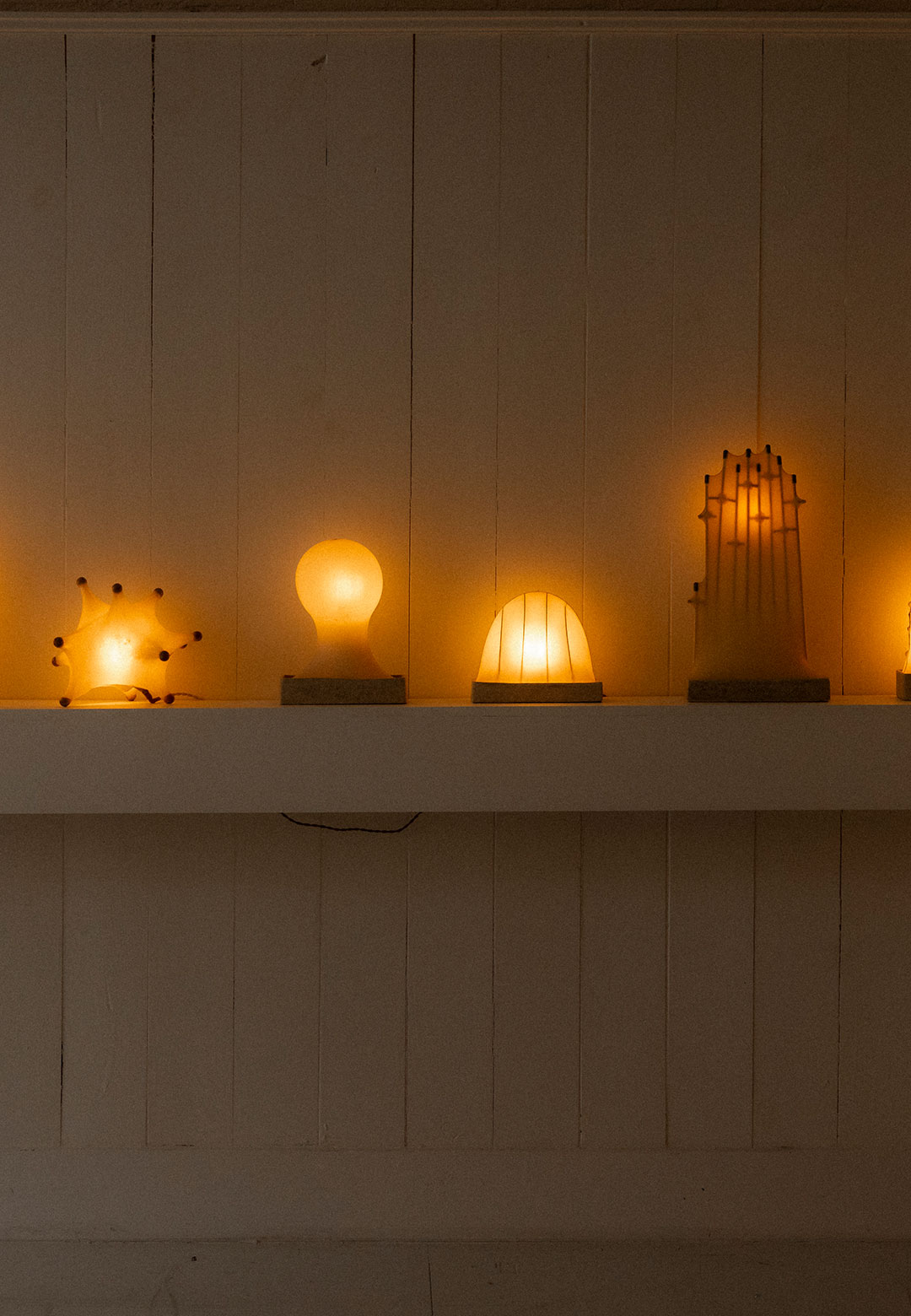A study of contrast, duality and materiality, Los Angeles-based sculptor James Cherry's latest body of work, FROM POLLEN, is a collection of sculptural lamps that reflect his experiences across two distinct environments—an artist residency at Salmon Creek Farm and his studio in Brooklyn. The residency is a queer arts programme based in Mendocino, Northern California, USA. Established as a counterculture commune in 1971, Salmon Creek Farm is now a long-term living art project shaped by many hands and one that offers programmes and residencies by the non-profit Salmon Creek Arts. Cherry joined the residency in the summer of 2024 and utilised the opportunity to reflect on his practice and means of making.
Cherry is a sculptor and lighting artist who deals primarily with material manipulation and leans towards transforming found objects into intimate, evocative pieces. His previous work explores themes of queerness, nostalgia and contemporary cultural undercurrents. These are themes that also find their way into the FROM POLLEN collection. "Being immersed in nature and surrounded by other queer people made me reflect on how different my day-to-day life is in the city or a traditional artist's studio. This led me to consider alternative ways of creating and what that could mean beyond the conventional," Cherry shares.
The Salmon Creek residency provided ground for these contemplations, offering a unique lens through which he could re-examine his practice. Comprising 25 lighting design works, the series employs raw, found materials—tree branches and organic fragments collected from the Redwood forest with the rigid industrialism of rebar and steel from the city.
At the core of the product design collection is a dialogue between nature and urbanity. Working from a cabin called Moonlight—named after its original builder—Cherry experimented with organic, sculptural forms that felt deeply embedded in the landscape. One of the most striking conceptual pieces in the collection is a pair of lamps—one constructed from twigs foraged outside his cabin in the forest and the other from twigs gathered in Central Park. The work is an exploration of how environments shape material choices and, in turn, artistic identity.
"I've been thinking about how to capture a sense of warmth and lightness within very planned, architectural forms—merging the organic with structure," he says. "At Salmon Creek, I began making lamps resembling towers or skyscrapers out of wood, which felt at odds with my small, one-story cabin on the hillside. Now, in New York, I'm using steel rods to do the same thing and suddenly the work reflects my urban surroundings," the lighting designer adds, delineating the evolution of his lamp designs.
Materiality plays a crucial role in Cherry's practice, particularly through his use of what he calls "makeshift fiberglass"—a composite material he developed using recycled paper, fabric and resin. The sculptural quality of this medium allows Cherry to wrap it around found materials, reinforcing them structurally while maintaining an enigmatic presence. "I have always tried to avoid using materials with immediate references, such as wood, concrete or stone because I like the idea of creating something new—something that exists on its own and is undefinable. I think we are attracted to the mystery of not knowing what a material is, where it came from, or how to define it," Cherry relays. The interplay of this experimental material with elements as disparate as delicate twigs and industrial steel rods lend FROM POLLEN its distinct visual and textural dynamism.
One of the standout works from the collection is the sculptural artist's Swords Partition, a lamp that embodies the fusion of city architecture and organic forms. Built from intertwined wood sticks and rubber and wrapped in Cherry's signature 'makeshift fiberglass', the piece mimics the geometry of a skyscraper while retaining the delicate quality of branches reaching skyward.
Pieces such as the Cucumber Grid and Apple Sconce are directly inspired from Cherry's time at Salmon Creek. Constructed from sliced cucumber and dried apple slices respectively and coated in a luminous resin, these works use organic materials one wouldn't think of when picturing lighting fixtures. "For a brief time, it felt as though my life mirrored that abundance because of this rare kind of heaven I found myself being a part of," Cherry notes, highlighting how the work encapsulates his personal experience at the residency.
Cherry's sculptural designs serve as beacons of this journey, illuminating both the tensions and harmonies between his rural and urban worlds. The collection was also displayed as part of an eponymous design exhibition at the TIWA Gallery in New York from December 11, 2024 - January 18, 2025. Marking Cherry's first solo stint with the gallery, the show stood as an intimate yet expansive exploration of form, material and the shifting nature of belonging.
(Text by Arryan Siingh, intern at STIR)






 Sign in with email
Sign in with email










What do you think?